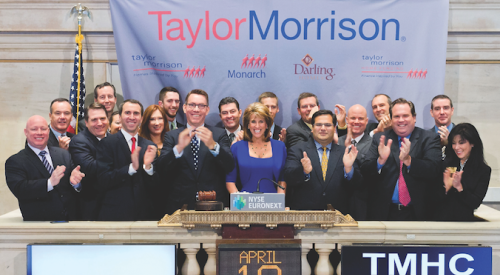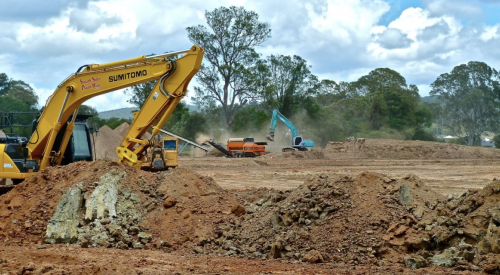|
One of the most curious trends to emerge from our 2004 GIANTS survey is the heat in high-rises, long a dormant housing form of little interest to the largest production builders. Not only is high-rise hot, but builders such as No. 9 Hovnanian Enterprises Inc. and No. 24 Kimball Hill Homes are getting into it and planning to do much, much more.
Our GIANTS questionnaire does not distinguish between high-rise and midrise — everything from five stories up is considered a high-rise. That includes true high-rises but also the much more widespread five- and six-story midrises that builders use to match the architectural character of old suburban downtowns from Chicagoland to California. Regardless, the 62.09% increase in high-rise units and 33.5% jump in revenue reveal that something is happening.
“This is an important growth market for two reasons,” says Ara Hovnanian, president and CEO of Hovnanian Enterprises. “First, entitlement issues. In New Jersey, they just don’t want us in cornfields anymore, and they’re legislating us back into the cities. We have to go up instead of out. Two, an increasing number of buyers want this product. A segment of empty nesters and young professionals prefer to live in the city as long as they can walk to retail and restaurants.”
Steve Olson, chairman of California infill builder The Olson Co. (No. 71), says, “We’re doing a lot of midrise buildings where we get four stories of housing over two stories of parking. We can get that to density of 70 units to the acre and still blend into the architecture of an existing neighborhood.” Olson closed 201 such units last year for $71.9 million.
Kimball Hill is building similar product in Chicago, its suburbs and even Wisconsin. “It’s a big part of the market today because of the importance of infill and urban redevelopment,” chairman and CEO David Hill says. “Downtown is hot.”
CEO John Peshkin is moving No. 19 Taylor Wood-row into high-rise condominium towers on the water up and down the Florida coast. “We’ll probably do this in a bigger way than anyone else except WCI,” he says. No. 17 WCI Communities Inc. closed 453 of these units last year for $593.9 million. “We have five waterfront high-rises under construction,” Peshkin says.
Longtime California builder Sherm Harmer, who now has a consulting business in downtown San Diego, where he walks to work, warns that high-rises require a big learning curve. “They are complicated and take a different skill set,” he says. “In the suburbs, you can build a house in 180 days. A downtown high-rise takes 780 days. It’s a lot more capital-intensive upfront, and there’s no phasing. But we sell them out before the building is done, without models.”












